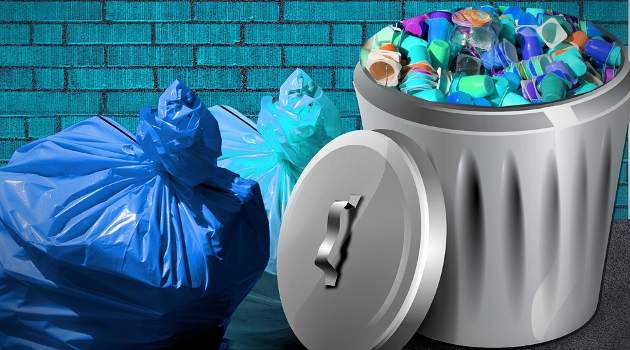Supply-side economics is simply the common-sense notion that people respond to incentives, though some folks think this elementary observation is “voodoo economics” or “trickle-down economics.”
If you want a wonkish definition of supply-side economics, it is the application of microeconomic principles.  In other words, what does “price theory” tell us about how people will respond when a tax goes up or down.
In other words, what does “price theory” tell us about how people will respond when a tax goes up or down.
All of which can be illustrated using supply and demand curves, for those who prefer something visual.
None of this is controversial. Indeed, left-wing economists presumably will agree with everything I just wrote.
There is disagreement, however, about the magnitude of supply-side responses. Do people respond a lot or a little when tax policy changes (using economic jargon, what are the “elasticities” of behavioral response)?
And even if there was a consensus on those magnitudes, that still wouldn’t imply agreement on the proper policy since people have different views on whether the goal should be more growth or more redistribution (what economist Arthur Okun referred to as the equality-efficiency tradeoff).
For what it’s worth, this is why there is a lot of fighting about the Laffer Curve. Every left-wing economist agrees with the underlying principle of the Laffer Curve  (in other words, because people can change their behavior, nobody actually thinks there is a linear relationship between tax rates and tax revenue).
(in other words, because people can change their behavior, nobody actually thinks there is a linear relationship between tax rates and tax revenue).
But economists don’t agree on the shape of the curve. Is the revenue-maximizing rate for the personal income tax 25 percent or 75 percent? And even if people somehow agreed on the shape of the curve, that doesn’t lead to agreement on the ideal tax rate because some statists want very high rates even if the result is less revenue. And people like me only care about the growth-maximizing tax rate.
I’m giving this background for the simple reason that the policy world is lagging the economics profession. And I’m not just referring to the Joint Economic Committee’s resistance to “dynamic scoring.” My bigger complaint is that a lot of politicians still act as if there is zero insight from supply-side economics and the Laffer Curve.
In hopes of rectifying this situation, I’ve been sharing examples of supply-side-motivated tax changes that have been adopted by leftists. In other words, tax changes that were adopted specifically to alter behavior.
Here’s the list of “successful” leftist tax hikes that have crossed my desk.
- The big drop in soda purchases after a tax on sugary drinks was imposed in Berkeley.
- The big drop in home sales after a tax was imposed in Vancouver on purchases by foreigners.
- The big drop in tobacco sales after a big increase in D.C.’s tobacco tax.
- The big drop in soda purchases after a tax was imposed in Philadelphia.
- The big drop in sales after a tax hike on expensive homes in the United Kingdom.
- The big drop in soda consumption after a tax was imposed in Mexico.
Now we have another example to add to my collection, this time from a tax on plastic bags in Chicago.
Just as predicted, there is revenue feedback because people change their behavior in response to changes in tax policy.
Chicago’s effort to keep plastic and paper bags out of area landfills by imposing a 7 cents-per-bag tax is succeeding beyond officials’ wildest dreams. The bad news is that the success of the fee in dissuading shoppers from taking single-use bags means the city’s coffers are taking a steep hit. Chicago officials balanced the city’s 2017 spending plan based on an assumption that the city would earn $9.2 million this year from the tax.
But receipts will fall far short of that goal.
The city has earned just $2.4 million in the five months the tax has been in effect, said Molly Poppe, a spokeswoman for the city’s Finance Department. If bag use continues at the current pace, that means the city would net just $7.7 million from the tax for the year. …the number of plastic and paper bags Chicagoans used to haul home their groceries dropped 42 percent in the first month after the tax was imposed.
Incidentally, the Mayor claims that the tax is a success because the real goal was discouraging plastic bags rather than raising revenue.
That’s certainly a very legitimate position, but note that his policy is based on supply-side economics: The more you tax of something, the less you get of it.
My frustration is that the politicians who say we need higher taxes to discourage bad things (smoking, sugar, plastic bags, etc) oftentimes are the same ones who say that higher taxes won’t discourage good things (work, saving, investment, entrepreneurship, etc).
Needless to say, this doesn’t make sense. They are either clueless or hypocritical. But maybe if I accumulate enough example of “successful” supply-side tax hikes, they’ll finally realize it’s not a good idea to punish productive behavior.
P.S. Check out the IRS data from the 1980s on what happened to tax revenue from the rich when Reagan dropped the top tax rate from 70 percent to 28 percent. I’ve used this information in plenty of debates and I’ve never run across a statist who has a good response.
P.P.S. Here’s my video with more evidence in favor of the Laffer Curve.
P.P.P.S. I also think this polling data from certified public accountants is very persuasive. I don’t know about you, but I suspect CPAs have a much better real-world understanding of the impact of tax policy than the bureaucrats at the Joint Committee on Taxation.

